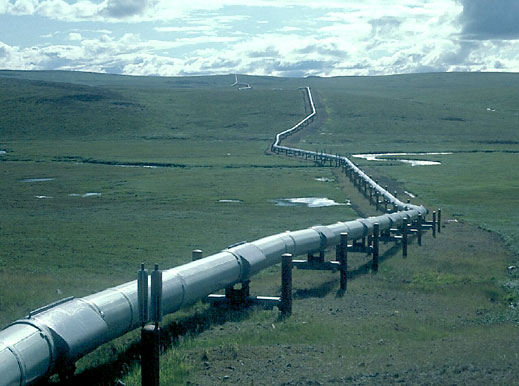
South Stream CEO Makes The Case For The Project
Publication: Eurasia Daily Monitor Volume: 8 Issue: 34
By:

Launched in 2007, Gazprom’s South Stream project ran out of potential gas resources by 2009 (thanks primarily to Turkmenistan’s reorientation), and out of potential financing at the same time (due to Gazprom’s declining net profits in Europe). Since 2010, Gazprom’s Italian partner ENI seeks a partial disengagement from South Stream, and suggested band-waggoning with the EU-backed Southern Corridor.
South Stream’s remaining usefulness to the Kremlin is that of a virtual project, generating enough static noise to interfere with Nabucco and other Southern Corridor projects. Second, it is a rearguard action to keep Turkmenistan unconnected with Europe (minimal goal) and revert to swapping Turkmen gas volumes to Europe as “Russian gas” (maximum goal). And third, it bluffs with the threat to divert gas volumes from Ukraine’s transit system into South Stream, unless Ukraine agrees to share control of its transit system with Gazprom.
Based on Gazprom’s business model as a vertically integrated monopoly, the South Stream project contravenes the EU’s common policy on gas market liberalization and supply diversification. This policy’s recent advances are not only erecting new hurdles to South Stream, but jeopardizing Gazprom’s existing positions in some of its captive markets. Moscow appeals to vested interests tied to the South Stream project, seeking to frustrate the implementation of the EU’s energy security and de-monopolization policies.
According to its official presentation, the South Stream consortium seeks “political support from the European Union in general and from EU member countries in particular,” in order to achieve the status of a “European top-priority project [among] the Trans-European Energy Networks” (“Gazprom: South Stream Project Presentation,” https://south-stream.info). The South Stream consortium is tasked to build the pipeline on the seabed of the Black Sea, from Russia to Bulgaria. This offshore section is a parity joint venture of Gazprom with ENI, the latter supplying the crucial pipe-laying technology. The pipeline sections in Southeastern and Central Europe are planned by Gazprom with each country individually, under Gazprom’s overall control.
Interviewed in The Financial Times (February 4) and, at far greater length, in the European Energy Review (EER, February 14), South Stream consortium’s CEO, Marcel Kramer, presents the arguments in favor of the project and its acceptance or even backing by the EU. A former CEO of Nederlands Gasunie, Kramer negotiated that company’s entry as a minority stakeholder in the Gazprom-led Nord Stream, directly thereafter becoming CEO of South Stream in 2010. Gasunie is one of several major European gas companies with diminishing reserves of their own, but seeking to remain major gas traders on the strength of Russian supplies through the Nord Stream project. Gasunie’s estimated reserves near Groningen have declined from 2.8 trillion to 1 trillion cubic meters after intensive extraction over time, and the Dutch Energy Council recommends that further production be slowed down (EER, February 9).
The arguments for South Stream are being laid out as follows:
1. Market share: South Stream would “not significantly enhance Russia’s market share” in Europe; and in any case, “there will not be a tsunami of new Russian gas going to Europe.” However, the EU’s common policy (as well as countries along the South Stream routes) needs diversification to reduce Gazprom’s market share, not to see it grow further. Countries with 70 percent to 100 percent dependence on Gazprom will hardly take comfort from even an “insignificant” increase in Gazprom’s market share above that level. In Germany (where dependence on Gazprom is nearly 40 percent and may increase through Nord Stream), RWE and BayernGas are keenly interested in supplies via Nabucco.
2. Funding and regulatory issues: Gazprom and other South Stream backers call for a “level playing field” in EU territory for their project, on a par with the Nabucco project. According to Kramer, South Stream does not seek or need preferential treatment, but “there should not be a built-in disadvantage for a project just because it brings gas from Russia.” Meanwhile, the EU Commission encourages lending institutions to support Nabucco and considers exempting the latter, but not South Stream, from third-party access rules. The equal-playing-field argument implies treating South Stream on a par with Nabucco as high-priority EU projects that qualify for financial support. Gazprom apparently hopes unrealistically to divert funding from Nabucco. By the same token it worries that third-party access to pipelines would open the market to competing suppliers, in countries along South Stream routes.
3. Diversification: countries in Central-Eastern Europe plan to build interconnector pipelines and seek access to liquefied natural gas (LNG), which according to Kramer would mitigate their dependence on Gazprom. In practice, however, additional gas volumes from Gazprom would lead to market-preemption, discouraging investment in LNG terminals and alternative supply pipelines, and precluding access.
4. Security of supply: For a clinching argument, Kramer recommends to the countries concerned to “look at Russia’s track record: the record is good” (EER, February 14).




